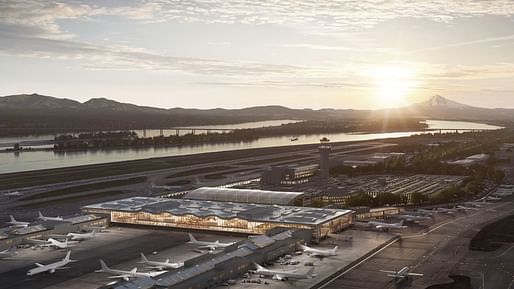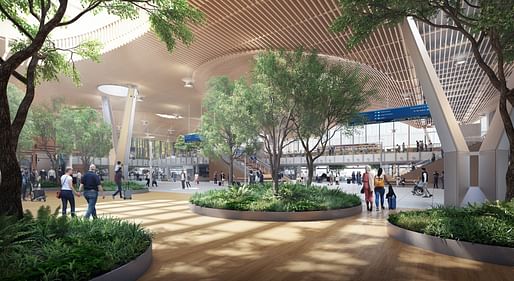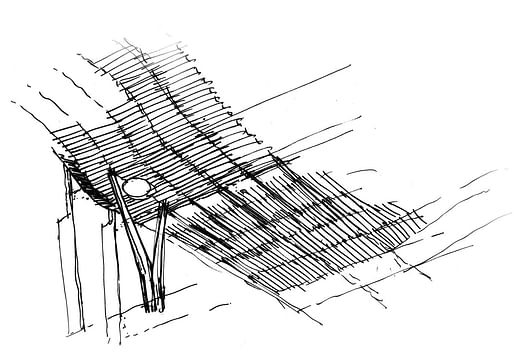
Construction has commenced on the ZGF-designed expansion of Portland International (PDX) Airport. The defining feature of the main terminal project, set to be completed in 2025, is a new lattice roof formed by 2.5 million feet of timber.

The scheme was conceived from a desire by the airport to create a more cohesive passenger experience and to bring a sense of unity to the airport after 70 years of expansions and additions. ZGF’s answer was a singular terminal building housed under one undulating, mass timber roof, accompanied by an interior strategy which prioritized biophilic design, interior landscaping, daylighting, and natural materials.
“Upon entering the new terminal core, visitors are invited to take a walk in the forest,” the architects say. “Views to the airfield, daylight, interior landscape, and art recalling the region’s natural beauty are present throughout the passenger journey.”

The roof is inspired by local weaving traditions, rafted from regionally, sustainably sourced timber. Covering nine acres and costing $125 million, the roof adopts a “rippling” form through gentle structural curves supported by glulam beams. Within the roof, large oval skylights filter through the wooden latticework, evoking the feeling of sunlight penetrating through forest branches.

Beyond the main hall and security checkpoints, the terminal is imagined as a series of rooms, with small plazas and pavilions for passengers to relax before their flight. The relationship of these plazas and corridors to shopping and restaurant units was also inspired by Portland’s urban grain, which features tree-lined streets with cafe seating and street furniture.

The terminal has also been designed to respond to seismic events such as earthquakes. The roof and curtain wall system are able to move up to 24 inches in any direction thanks to hinged connections within the curtain walling system, minimizing the damage from the seismic event. Meanwhile, a tight envelope, passive heating and cooling systems, and the incorporation of natural daylight all provide for passive survivability after being disconnected from the power grid.

From a sustainability standpoint, 95% of the airport’s heating and lighting loads are reportedly provided by a fossil fuel-free heating system. While passenger volume will increase over the next decade, and with that overall water consumption, the number of gallons used per passenger is projected to decrease due to the use of well water for non-potable uses.
We know you love the carpet. Soon you’ll have a reason to look up, too! Our giant new roof is coming in 2024. #LookUpPDX #PDXNext pic.twitter.com/dxlwUC40us
— flypdx (@flypdx) July 20, 2022
News of the project’s construction comes weeks after BIG and HOK were announced as the winners of a competition to design an expansion of Zurich Airport in Switzerland.
3 Comments
The perspective on Big Wood demonstrates the importance of Architecture in regard to time and place. We need to steer Architectural Design to full compliance and more restrictive for a contemporary base; yet, unfortunately, does PDX need to build a new runway for a 747 to land?
Any data on how many trees can be produce annually for architecture ? Are we using up more than the earth can produce ( which we always have ) ?
Depends on the kind of trees we are talking about. Farmed lumber…the more the merrier. That structure is basically trapped carbon. I’m very optimistic about genetically modified timber. With crispr, people are going to be able to push wood to the next level. If we can make it grow faster and have better structural properties…sky is the limit really.
Block this user
Are you sure you want to block this user and hide all related comments throughout the site?
Archinect
This is your first comment on Archinect. Your comment will be visible once approved.